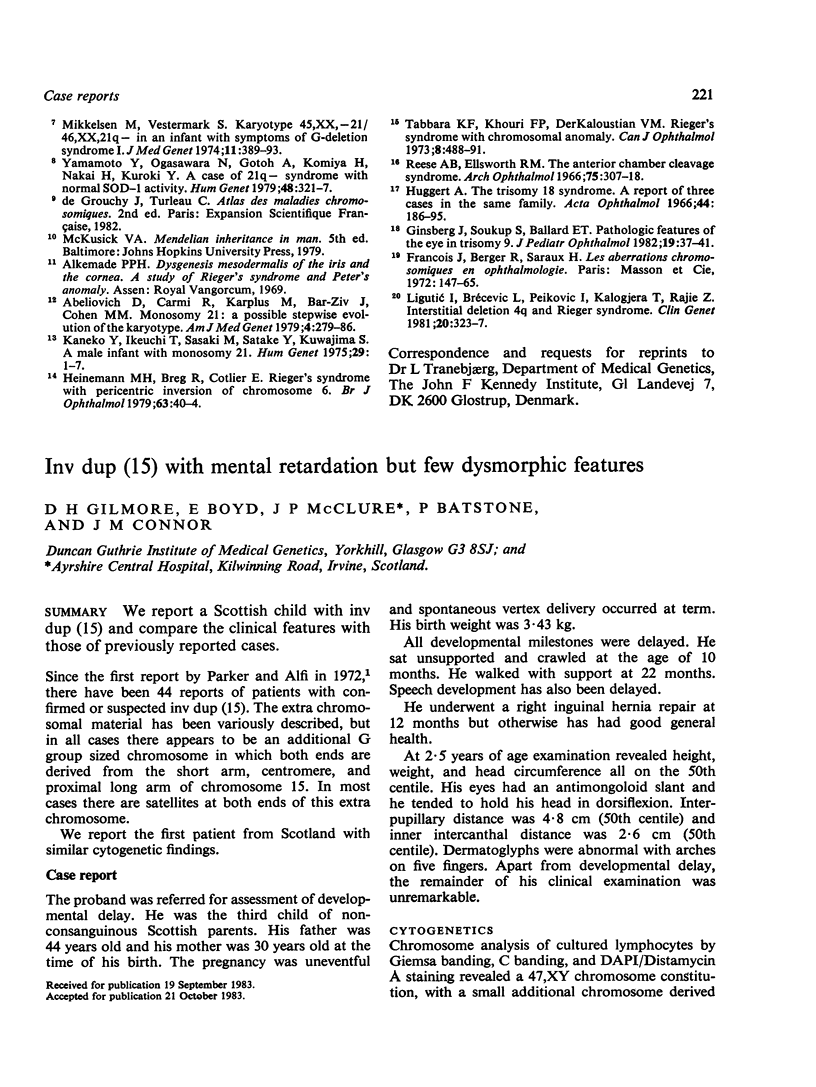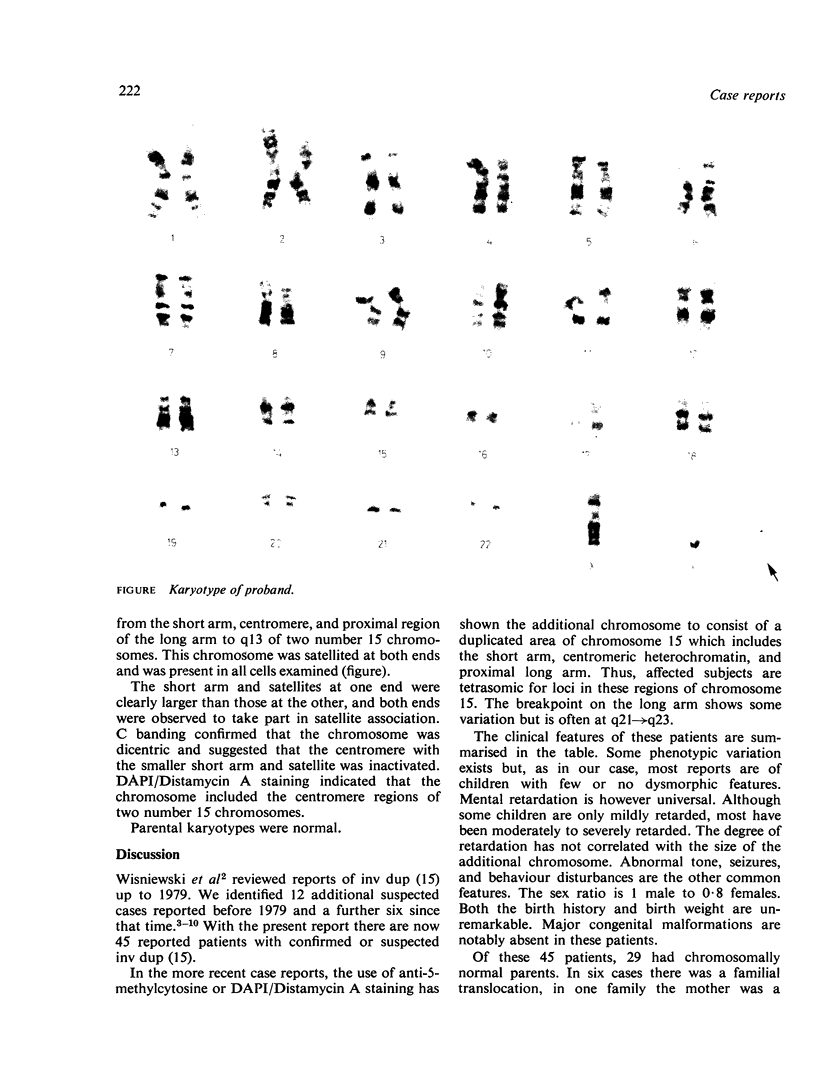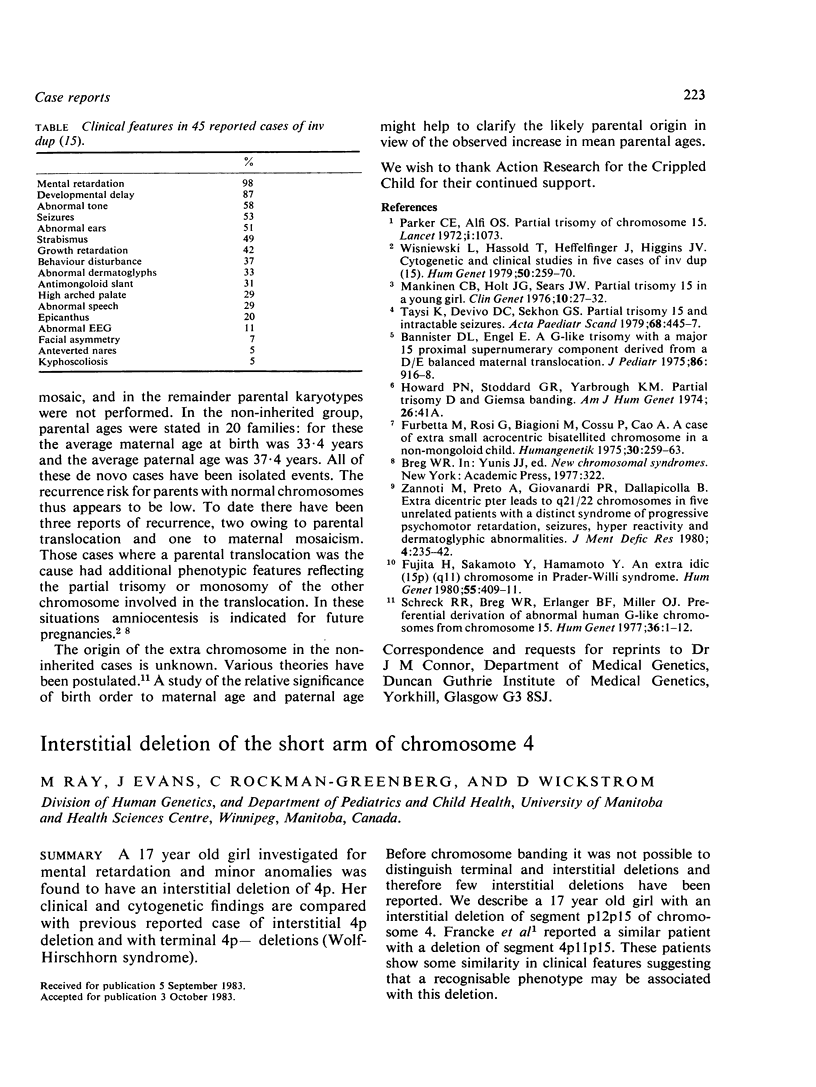Abstract
We report a Scottish child with inv dup (15) and compare the clinical features with those of previously reported cases. Since the first report by Parker and Alfi in 1972, there have been 44 reports of patients with confirmed or suspected inv dup (15). The extra chromosomal material has been variously described, but in all cases there appears to be an additional G group sized chromosome in which both ends are derived from the short arm, centromere, and proximal long arm of chromosome 15. In most cases there are satellites at both ends of this extra chromosome. We report the first patient from Scotland with similar cytogenetic findings.
Full text
PDF


Images in this article
Selected References
These references are in PubMed. This may not be the complete list of references from this article.
- Bannister D. L., Engel E. A G-like trisomy with a major 15 proximal supernumerary component derived from a D/E balanced maternal interchange. J Pediatr. 1975 Jun;86(6):916–917. doi: 10.1016/s0022-3476(75)80228-9. [DOI] [PubMed] [Google Scholar]
- Fujita H., Sakamoto Y., Hamamoto Y. An extra idic(15p)(q11) chromosome in Prader-Willi syndrome. Hum Genet. 1980;55(3):409–411. doi: 10.1007/BF00290227. [DOI] [PubMed] [Google Scholar]
- Furbetta M., Rosi G., Biagioni M., Cossu P., Cao A. A case of extra small acrocentric bisatellited chromosome in a non mongoloid child. Humangenetik. 1975 Sep 20;30(3):259–263. doi: 10.1007/BF00279191. [DOI] [PubMed] [Google Scholar]
- Mankinen C. B., Hold J. G., Sears J. W. Partial trisomy 15 in a young girl. Clin Genet. 1976 Jul;10(1):27–32. doi: 10.1111/j.1399-0004.1976.tb00005.x. [DOI] [PubMed] [Google Scholar]
- Parker C. E., Alfi O. S. Partial trisomy of chromosome 15. Lancet. 1972 May 13;1(7759):1073–1073. doi: 10.1016/s0140-6736(72)91259-7. [DOI] [PubMed] [Google Scholar]
- Schreck R. R., Breg W. R., Erlanger B. F., Miller O. J. Preferential derivation of abnormal human G-group-like chromosomes from chromosome 15. Hum Genet. 1977 Apr 7;36(1):1–12. doi: 10.1007/BF00390430. [DOI] [PubMed] [Google Scholar]
- Taysi K., Devivo D. C., Sekhon G. S. Partial trisomy 15 and intractable seizures. Acta Paediatr Scand. 1979 May;68(3):445–447. doi: 10.1111/j.1651-2227.1979.tb05036.x. [DOI] [PubMed] [Google Scholar]
- Wisniewski L., Hassold T., Heffelfinger J., Higgins J. V. Cytogenetic and clinical studies in five cases of inv dup(15). Hum Genet. 1979 Sep;50(3):259–270. doi: 10.1007/BF00399391. [DOI] [PubMed] [Google Scholar]
- Zannotti M., Preto A., Giovanardi P. R., Dallapiccola B. Extra dicentric 15 pter leads to q21/22 chromosomes in five unrelated patients with a distinct syndrome of progressive psychomotor retardation, seizures, hyper-reactivity and dermatoglyphic abnormalities. J Ment Defic Res. 1980 Dec;24(Pt 4):235–242. doi: 10.1111/j.1365-2788.1980.tb00077.x. [DOI] [PubMed] [Google Scholar]



